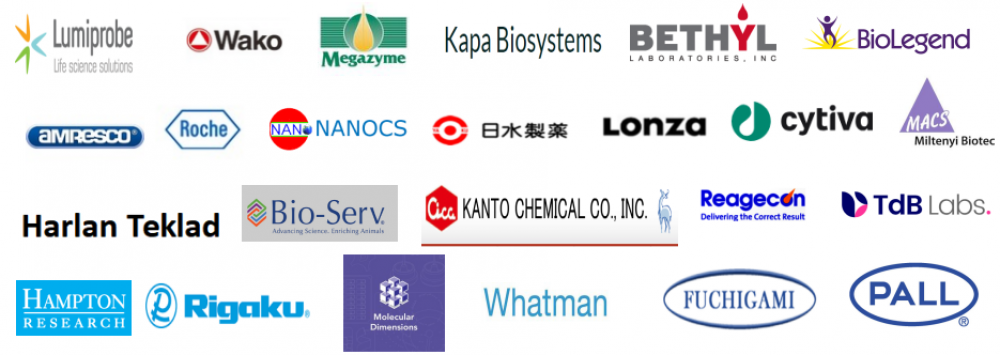Oxoid代理 CM0405B Oxoid MH肉汤 MUELLER HINTON BROTH中文说明书
Dehydrated Culture Media
MUELLER-HINTON BROTH
Code: CM0405
An antimicrobial susceptibility testing medium which may be used in internationally recognized standard procedures.
一种可用于国际公认标准程序的抗菌药敏试验介质。
| Typical Formula* |
gm/litre |
| Beef, dehydrated infusion from |
300.0 |
| Casein hydrolysate |
17.5 |
| Starch |
1.5 |
| pH 7.3 ± 0.1 @ 25°C |
|
* Adjusted as required to meet performance standards
Directions
Place 21.0g in 1 litre of distilled water mix to dissolve completly. Sterilize by autoclaving at 121°C for 15 minutes. Chill and adjust cation levels if necessary1.
Description
Oxoid Mueller-Hinton Broth has been produced in parallel with Oxoid Mueller-Hinton Agar CM0337. Where studies on antibiotic susceptibilities are being made both in broth and agar, it will be found to be of particular value to have media of identical nutrient formulation.
Mueller-Hinton Broth is recommended for broth dilution MIC studies1.
Oxoid Mueller-Hinton Broth will require supplementation with the divalent cations Mg++ and Ca++ after sterilisation2. The CLSI recommend the following cation levels Ca++, 20-25mg/litre; Mg++, 10-12.5mg/litre.
Lysed horse blood or thymidine phosphorylase may be added to the broth to improve the MIC endpoints of sulphonamides and trimethoprim3.
Mueller-Hinton Broth containing horse serum and agar added to create a semi-solid agar medium was used in microtitre plates in an agar dilution method for determining the MIC for Helicobacter pylori of a number of antibiotics. The method does not require prolonged incubation in carbon dioxide-enriched air and results are available in 48 hours compared to 3-4 days for agar diffusion testing on solid medium4.
For further details of antimicrobial susceptibility testing see relevant section.
方向
将 21.0g 放入 1 升蒸馏水中完全溶解。通过在 121°C 高压灭菌 15 分钟进行灭菌。必要时冷却并调整阳离子水平1。
描述
Oxoid Mueller-Hinton 肉汤与 Oxoid Mueller-Hinton 琼脂 CM0337 平行生产。当在肉汤和琼脂中都对抗生素敏感性进行研究时,将发现具有相同营养成分的培养基具有特别的价值。
建议将 Mueller-Hinton Broth 用于肉汤稀释 MIC 研究1。
Oxoid Mueller-Hinton Broth 在灭菌后需要补充二价阳离子 Mg++ 和 Ca++2。 CLSI 推荐以下阳离子水平 Ca++,20-25mg/L; Mg++,10-12.5mg/升。
可以将裂解的马血或胸苷磷酸化酶添加到肉汤中以改善磺胺类药物和甲氧苄啶3 的 MIC 终点。
Mueller-Hinton Broth 含有马血清和添加的琼脂以形成半固体琼脂培养基,该培养基用于微量滴定板中,采用琼脂稀释法测定多种抗生素对幽门螺杆菌的 MIC。该方法不需要在富含二氧化碳的空气中长时间孵育,并且在 48 小时内即可获得结果,而在固体培养基上进行琼脂扩散测试则需要 3-4 天4。
有关抗菌药物敏感性测试的更多详细信息,请参见相关部分。
Storage conditions and Shelf life
Store the dehydrated medium at 10-30°C and use before the expiry date on the label.
Store the prepared medium at 2-8°C.
Appearance
Dehydrated medium: Straw coloured, free-flowing powder
Prepared medium: Light straw to straw coloured solution
储存条件和保质期
将脱水培养基储存在 10-30°C 并在标签上的有效期之前使用。
将准备好的培养基储存在 2-8°C。
外貌
脱水介质:稻草色、自由流动的粉末
制备培养基:浅稻草色至稻草色溶液
Quality control
| Positive controls: | Expected results |
| Escherichia coli ATCC® 25922 * | Turbid growth |
| Pseudomonas aeruginosa ATCC® 27853 * | Turbid growth |
| Enterococcus faecalis ATCC® 29212 * | Turbid growth |
| Negative control: | |
| Uninoculated medium | No change |
* This organism is available as a Culti-Loop®
Precautions
Monitor the performance of the broth routinely using the standard QC organisms. If the broth does not yield the expected MIC values, modify the volumes of Mg++ and Ca++ solutions until the MIC values approximate to those in Table 3 in reference1.
If the thymidine content is lowered, after the addition of lysed horse blood or thymidine phosphorylase, the MIC values may be lower.
防范措施
使用标准 QC 生物定期监测肉汤的性能。 如果肉汤没有产生预期的 MIC 值,请修改 Mg++ 和 Ca++ 溶液的体积,直到 MIC 值接近参考 1 中表 3 中的值。
如果胸苷含量降低,加入裂解马血或胸苷磷酸化酶后,MIC值可能会降低。
图片仅供参考,请以实物为准。
若本网站没有及时更新,请大家谅解!
正文中列出的所有试剂只能用于测试或研究,不能作为”药品”,”食品”,”家庭用品”等使用。
我司所销售的化学试剂、原料等所有产品(包括但不限于抗生素类、蛋白质类、试剂盒类产品等)仅限用于科学研究用途,不得作用于人体。
库存信息随时变更,准确货期以下单时确认为准。
References 参考文献
1. National Committee for Clinical Laboratory Standards (2000) Methods for Dilution Antimicrobial Susceptibility Tests for bacteria that grow Aerobically. Approved Standard M7-A5. NCCLS. Villanova, Pa.
2. Thornsberry C., Gavan T. L. and Gerlach E. H. (1977) Cumitech 6. American Society for Microbiology. Washington DC.
3. Swenson J. M. and Thornsberry C. (1978) Curr. Microbiol. l. 189-193.
4. Kobayashi, Hasegawa M., Saika T. et al (1997) J. Antimicrob. Chemother. 40. 713-716.
